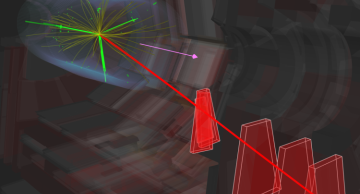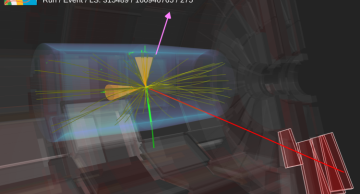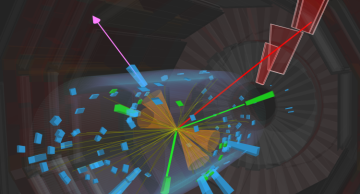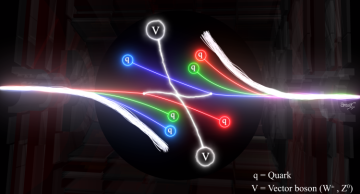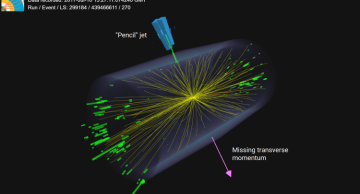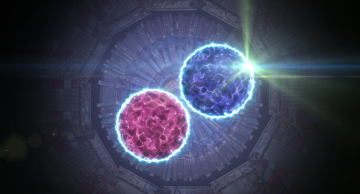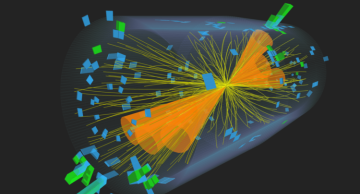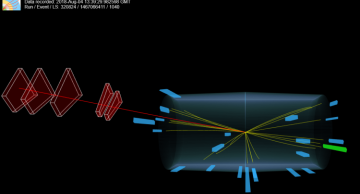CMS presents the most precise measurement of WWZ production to date by combining Run 2 data with more recent Run 3 data.
The electroweak interaction provides a unified description of the electromagnetic and weak forces, but this symmetry is broken…
News
|
adelanno |
Physics
|
maiqbal |
Physics
The CMS experiment presents the first-ever search for a Higgs boson decaying to charm quarks when the Higgs boson is produced along with two top quarks.
The Higgs boson plays a central role in our understanding of the fundamental forces of…
|
maiqbal |
Physics
For the first time, the CMS experiment has employed physics-informed machine learning to observe whether the laws of physics still hold true when top quarks and Z bosons are replaced with their antiparticles and space is reflected.
We know…
|
adelanno |
Physics
An excess in data hints at the existence of a top quark-antiquark quasi-bound state, called “toponium”.
The CMS collaboration has reported an excess in interactions involving top quark pairs. The results are consistent with a pair of top quark and…
|
adelanno |
Physics
The CMS Collaboration investigates whether physics plays favorites with quarks.
In the standard model of particle physics (SM), quarks come in six different types (“flavours”) which are categorized into three generations. Although the standard…
|
maiqbal |
Physics
The CMS experiment performs a combined measurement of the scattering of W and Z bosons in the several possible final states, improving over the precision of each individual result.
When the Large Hadron Collider started taking data in 2008,…
|
maiqbal |
Physics
The CMS experiment conducts the first search for dark matter particles produced in association with an energetic narrow jet—the pencil jet.
Dark matter remains one of physics’ greatest mysteries. Despite making up about 27% of the universe’s…
|
maiqbal |
Physics
In a recent measurement, the CMS experiment confirms a slight but persistent disagreement between the simulated and the observed rates of events in which a top quark pair is produced accompanied by a W boson.
One of the goals of the CMS…
|
maiqbal |
Physics
The CMS experiment has conducted a comprehensive study of the rates of production of top quark pairs created along with a photon, both inclusively and as a function of several kinematic variables.
As the heaviest fundamental particle, the top…
|
maiqbal |
Physics
The CMS experiment studies the Higgs boson as a potential window into dark matter, and sets constraints on this mechanism, which gives rise to isotropic sprays of low-energy particles.
Quantum chromodynamics (QCD) describes the strong…
|
maiqbal |
Physics
The CMS experiment has conducted a search for heavy beyond-standard-model particles (referred to as a Z′ boson) that give rise to a top quark-antiquark pair decaying into hadrons. The search excludes the existence of the new Z′ boson with…
|
adelanno |
Physics
The ratios of the B meson production fractions have been measured for the first time in the CMS experiment.
B mesons are composite particles consisting of a bottom antiquark and another type of quark, such as an up, down, or strange quark,…

